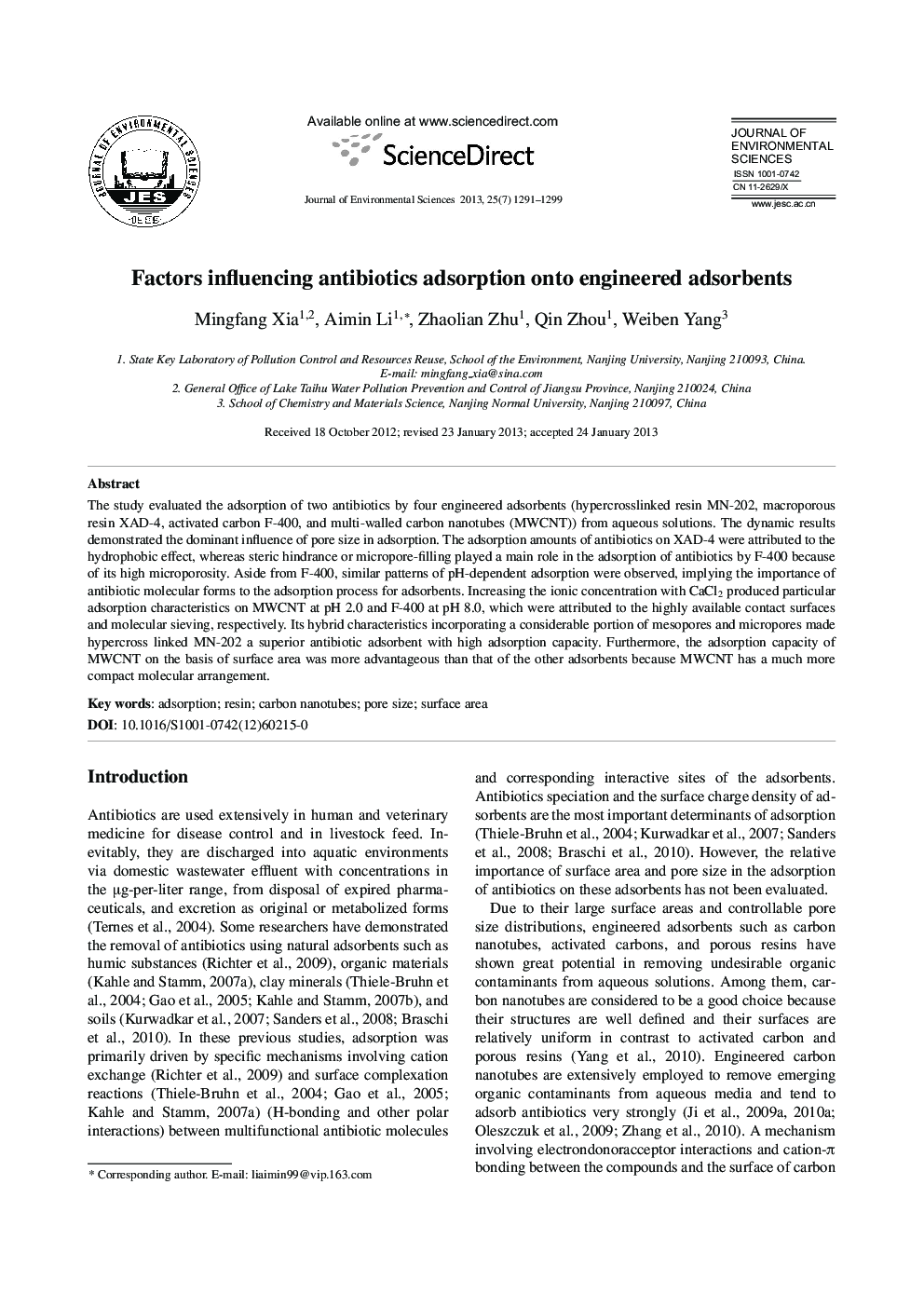| Article ID | Journal | Published Year | Pages | File Type |
|---|---|---|---|---|
| 4454838 | Journal of Environmental Sciences | 2013 | 9 Pages |
The study evaluated the adsorption of two antibiotics by four engineered adsorbents (hypercrosslinked resin MN-202, macroporous resin XAD-4, activated carbon F-400, and multi-walled carbon nanotubes (MWCNT)) from aqueous solutions. The dynamic results demonstrated the dominant influence of pore size in adsorption. The adsorption amounts of antibiotics on XAD-4 were attributed to the hydrophobic effect, whereas steric hindrance or micropore-filling played a main role in the adsorption of antibiotics by F-400 because of its high microporosity. Aside from F-400, similar patterns of pH-dependent adsorption were observed, implying the importance of antibiotic molecular forms to the adsorption process for adsorbents. Increasing the ionic concentration with CaCl2 produced particular adsorption characteristics on MWCNT at pH 2.0 and F-400 at pH 8.0, which were attributed to the highly available contact surfaces and molecular sieving, respectively. Its hybrid characteristics incorporating a considerable portion of mesopores and micropores made hypercross linked MN-202 a superior antibiotic adsorbent with high adsorption capacity. Furthermore, the adsorption capacity of MWCNT on the basis of surface area was more advantageous than that of the other adsorbents because MWCNT has a much more compact molecular arrangement.
